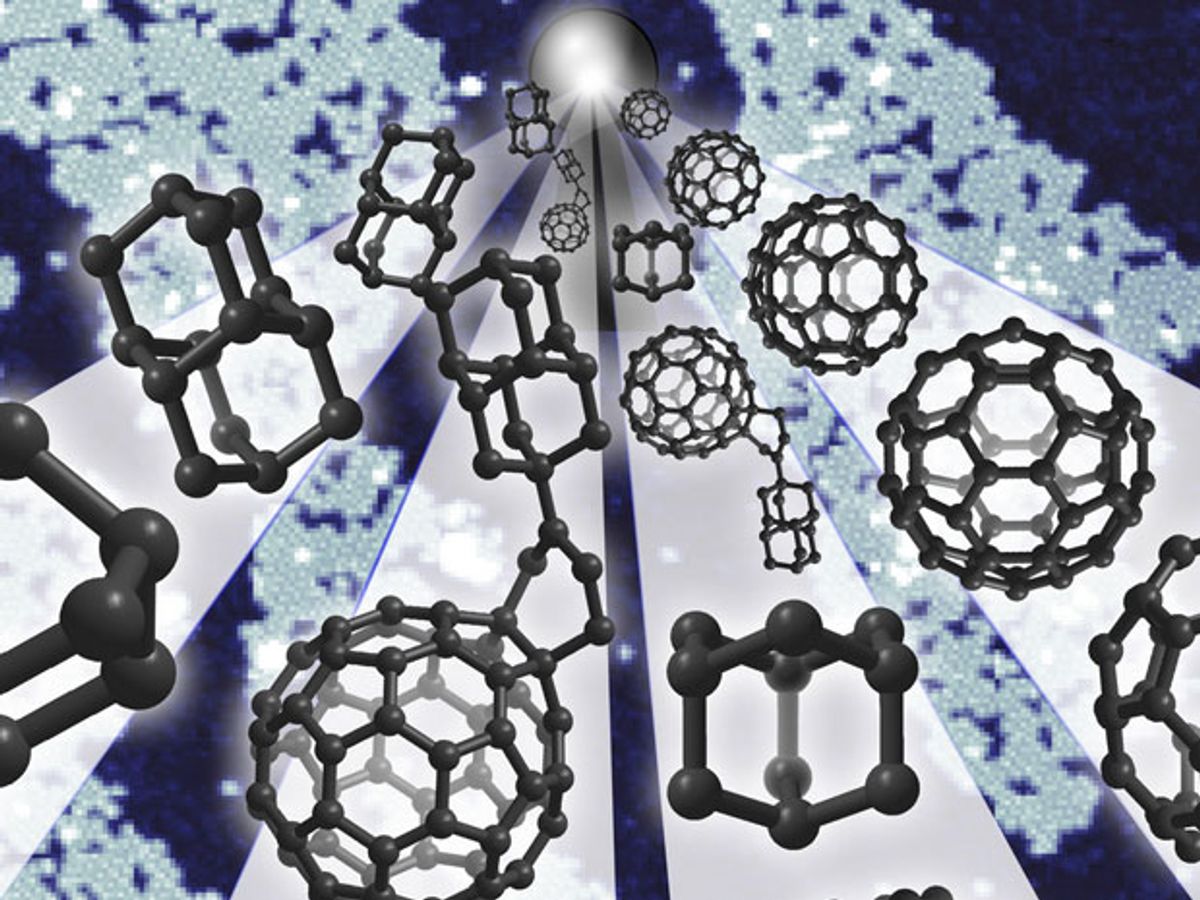What happens when you combine a buckyball with a diamondoid? As it turns out something wonderful for the prospects of molecular electronics. In fact, you get a new kind of material that conducts electricity in just one direction.
This conducting of electricity in one direction is the role of rectifiers, which take the form of diodes in computer chips. By shrinking these diodes down to the size of a nanoparticle it could shrink chip size while making devices faster and more powerful.
In research published in the journal Nature Communications, an international team of scientists Catholic University of Louvain in Belgium, Kiev Polytechnic Institute in Ukraine and Justus-Liebig University in Germany built on research conducted at the Department of Energy’s SLAC National Accelerator Laboratory back in 2007, which demonstrated that a single layer of diamondoids on a metal surface can efficiently emit a beam of electrons. Diamondoids are molecules found in petroleum that have the basic chemical structure of diamonds, but are coated on the outside in hydrogen molecules.
From that seven-year-old experiment, Hari Manoharan of the Stanford Institute for Materials and Energy Sciences (SIMES) at the Department of Energy’s SLAC National Accelerator Laboratory, and his team wondered what would happen if they combined the diamondoid with another particle that could grab the electrons. They knew that buckyballs, which are hollow carbon spheres, had that capability.
“We wanted to see what new, emergent properties might come out when you put these two ingredients together to create a ‘buckydiamondoid,’” said Manoharan in news release. “What we got was a basically a one-way valve for conducting electricity — clearly more than the sum of its parts.”
The researchers discovered that the buckyball and diamonoid hybrid, dubbed a ‘buckydiamonoid’, allowed electrical current to flow through it up to 50 times stronger in one direction, from electron-spitting diamondoid to electron-catching buckyball, than in the opposite direction.
Although this is not the first molecule-size rectifier ever developed, it does mark the first time one has been constructed solely from carbon and hydrogen. The researchers are going to see if they can make the transistors from the same two materials.
“Buckyballs are easy to make — they can be isolated from soot — and the type of diamondoid we used here, which consists of two tiny cages, can be purchased commercially,” said Manoharan. “And now that our colleagues in Germany have figured out how to bind them together, others can follow the recipe. So while our research was aimed at gaining fundamental insights about a novel hybrid molecule, it could lead to advances that help make molecular electronics a reality.”
Dexter Johnson is a contributing editor at IEEE Spectrum, with a focus on nanotechnology.



